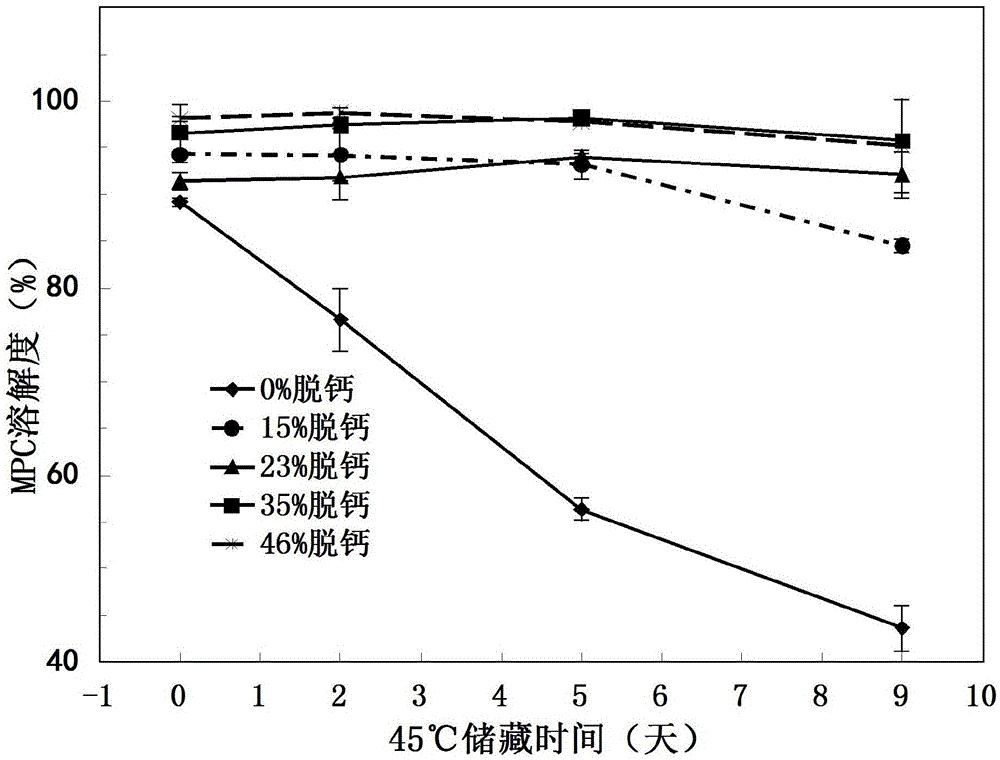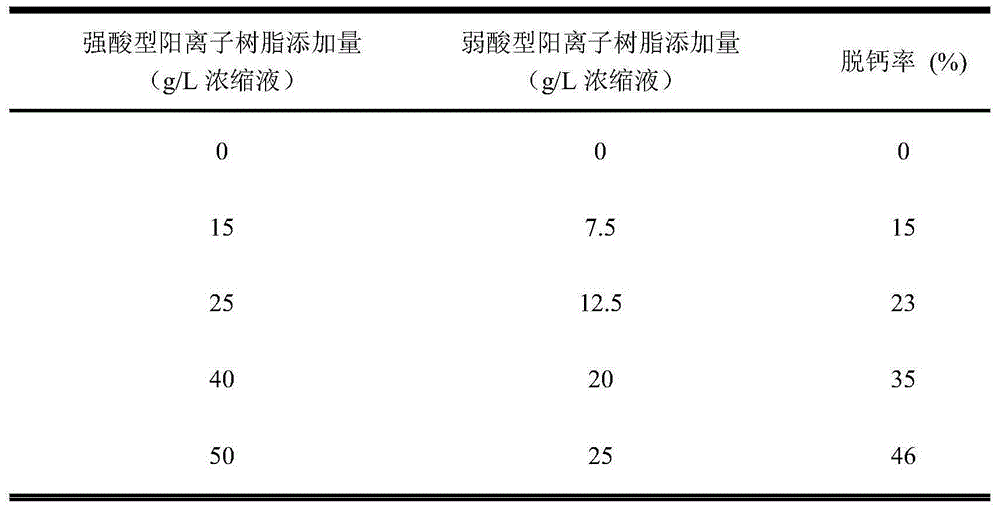Method for improving concentrated milk protein powder solubility through ion exchange decalcification
A technology of ion exchange and protein powder, applied in the field of milk powder processing, can solve the problems of low reconstitution degree, affecting product quality, poor storage stability, etc.
- Summary
- Abstract
- Description
- Claims
- Application Information
AI Technical Summary
Problems solved by technology
Method used
Image
Examples
Embodiment example 1
[0020] A kind of is with skimmed milk as raw material, utilizes the method for decalcification of strong acid type cation exchange resin to improve the solubility of MPC, and its specific process steps are as follows:
[0021] Take 40L of commercially available pasteurized skim milk and treat it with a polyethersulfone ultrafiltration membrane with a molecular weight cut-off of 10,000MWCO at a temperature of 35°C. Concentrate 4 times once, and its basic indicators can refer to Table 1. The retentate had a solids content of 9% and a pH of 7.0. Add 50-550g of strong-acid cation exchange resin Amberlite SR1LNa, after ion exchange treatment at room temperature for 2 hours, the pH value is 7.0-7.5, adjust the pH value to 7.0, and perform falling film evaporation at a temperature lower than 70°C to make the solid content 21%. Finally, the decalcified MPC is obtained by spray drying at an inlet temperature of 175°C and an outlet temperature of 75°C, and the final decalcification rat...
Embodiment example 2
[0029] A kind of with MPC redissolved product as raw material, utilizes the method for the decalcification of weak acid type cation exchange resin to improve the solubility of MPC, and its specific process steps are as follows:
[0030] Take 2kg of commercially available MPC dry powder and redissolve in 20L deionized water to prepare a concentrated milk protein solution with a solid content of 10% (w / v), stir in a constant temperature water bath at 50°C for 1 hour, and homogenize twice under a homogenizing pressure of 28Mpa. is 6.9. Add 150 g of weak acid type cation exchange resin Duolite Resin C433, and after ion exchange treatment at room temperature for 1.5 h, the pH value is 7.1. Adjust the pH to 6.9. Falling film evaporation is carried out at lower than 70°C to make the solid content 22%, and then spray-dried at 180 / 75°C, the decalcification rate reaches 15%.
Embodiment example 3
[0032] A kind of whole milk is used as raw material, utilizes the method for decalcification of strong acid type cation exchange resin to improve the solubility of MPC, and its specific process steps are as follows:
[0033] After removing fat from 80L of fresh whole milk, it is treated with polyethersulfone ultrafiltration membrane with a molecular weight cut-off of 10,000MWCO, and the ultrafiltration temperature is 35°C. The final concentration is 4 times, that is, the permeate volume is 60L, and the ultrafiltration is stopped when the concentrated milk protein retentate is 20L. The retentate had a solids content of 12% and a pH of 6.8. After adding 500 g of strong acid cation exchange resin Amberlite SR1LNa for ion exchange treatment for 3 hours, the pH value was 7.2, and the pH was adjusted to 6.8. Perform falling film evaporation at a temperature lower than 70°C to make the solid content 19%, and then spray dry at 175 / 80°C to obtain MPC dry powder, and the decalcificatio...
PUM
 Login to View More
Login to View More Abstract
Description
Claims
Application Information
 Login to View More
Login to View More - R&D
- Intellectual Property
- Life Sciences
- Materials
- Tech Scout
- Unparalleled Data Quality
- Higher Quality Content
- 60% Fewer Hallucinations
Browse by: Latest US Patents, China's latest patents, Technical Efficacy Thesaurus, Application Domain, Technology Topic, Popular Technical Reports.
© 2025 PatSnap. All rights reserved.Legal|Privacy policy|Modern Slavery Act Transparency Statement|Sitemap|About US| Contact US: help@patsnap.com



